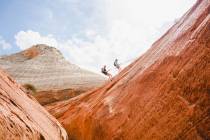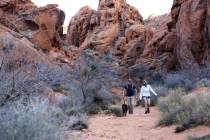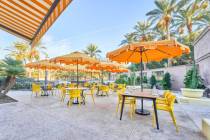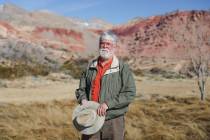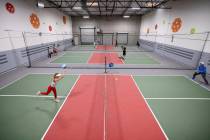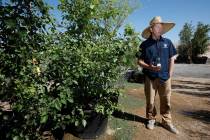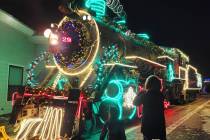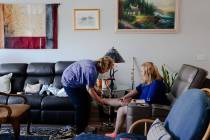Sometimes Even Californians Get It Right
Nearly a century ago, writer Aldous Huxley called Los Angeles “19 suburbs in search of a metropolis.” In many ways, Las Vegas is the 20th suburb. The two cities share such links as the Old Spanish Trail, the L.A. to Salt Lake Railroad and Interstate 15. Three Southern California architects also did a great deal to make Las Vegas look the way it has and does.
■ Gordon Kaufmann’s work on the Scripps campuses and Cal Tech in Pasadena, where Los Angeles Times owner Harry Chandler lived, led to his designing Times building. Chandler was a supporter of the construction of Hoover Dam to provide cheap water and power to spur development in Southern California, and the Bureau of Reclamation asked Kaufmann to design the dam. The results remain striking. He shaped the appearance of the crest, the towers and the powerhouse where the turbines reside and brought in artist Allen True to design its terrazzo floors. He also oversaw a contest that led to artist Oskar Hansen creating the “Winged Figures of the Republic” as monuments to dam workers who died during construction. Kaufmann’s influence turned the dam into what architectural historian Richard Guy Wilson called “a chapel of the machine age.”
Kaufmann’s adoption of art deco style for the dam had other local effects. Architect David Schwarz modeled much of The Smith Center for the Performing Arts on Hoover Dam.
■ Wayne McAllister wasn’t even 21 when he designed the Agua Caliente, a hotel-casino near Tijuana, followed by numerous Los Angeles-area nightclubs and restaurants. Architecture critic Alan Hess called him “one of the most significant architects of the 20th century” because “he saw that the world was being shaped by the automobile.”
Thomas Hull recognized McAllister’s abilities and asked him to design the El Rancho Vegas, which opened in 1941 as the Las Vegas Strip’s first resort hotel. He went on to design the Desert Inn, Sands and Fremont before joining Marriott and later going into business for himself, developing coin-operated copy machines.
■ Paul Revere Williams became the first Black member of the American Institute of Architects. He learned to draft upside-down because he knew some clients would want to sit across from a Black man instead of next to him. Besides commercial buildings, he designed more than 2,000 homes for Southern California business leaders and celebrities, including Frank Sinatra. Williams also designed Reno’s First Church of Christ, Scientist, now the Lear Theatre.
But Williams’s most significant Nevada work was in the southern region. During World War II, Basic Magnesium started a townsite for its workers southeast of Las Vegas in present-day Henderson. Williams designed houses for Black employees segregated in Carver Park. After the war, Williams designed Berkley Square, the first subdivision built in the Historic Westside for Black residents and now part of the National Register of Historic Places. It included 148 ranch-style homes built in 1954 and 1955. Its residents included local civil rights leaders such as Dr. Charles West and Dr. James McMillan.
Williams then made significant contributions on the Las Vegas Strip. He turned from ranch-style to futuristic Googie architecture in designing the concrete paraboloid La Concha Motel for the Doumani family. The motel opened in 1961 and, after its closure, moved down Las Vegas Boulevard to become the lobby of The Neon Museum. The year La Concha opened, Desert Inn boss Moe Dalitz donated land near his hotel for the Catholic Church to build a new facility, and Williams was the man for the job: His Guardian Angel Shrine, later designated a cathedral, opened in 1963, a soaring gesture to the spirit of a city on the rise. ◆
Michael Green is a professor of history at UNLV.



